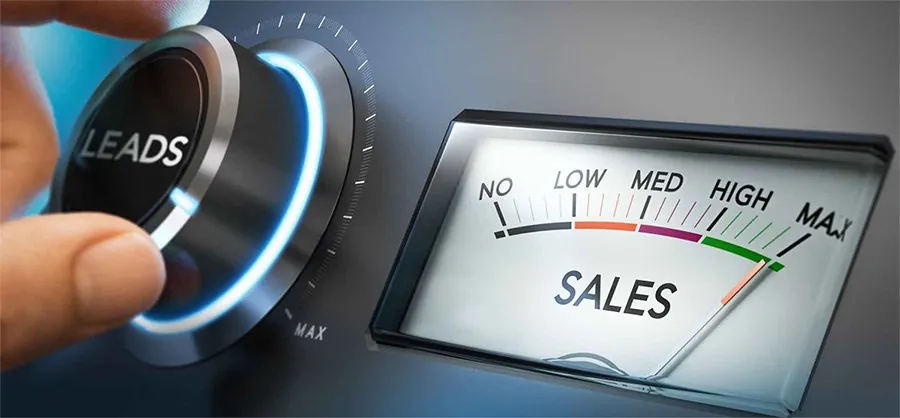A Formal Sales Process: The Key to Increasing Revenue

A common issue among many sales organizations is the lack of a formal sales process. While it’s possible to improve a sales organization without having a universally followed sales process, there’s a limit to how much they can progress. To get the maximum benefit out of other methods, a business needs a formal sales process before anything else. Ergo, this five-step guide to creating and instituting a sales process.
Define your sales philosophy. The sales process starts with your sales philosophy – how you plan to sell to your customers. As a basic example, “Our sales philosophy is to identify customer needs and match our offerings to fulfill those identified needs.” Notice how the statement puts identifying customer needs first and says that solutions will be made according to discovered needs. In essence, it’s functioning as a mini-road map to the sales process (like an essay map thesis statement does for a college paper).
Construct a database of customer profiles and common problems. In a given industry or vertical, certain customer profiles and problem types occur regularly. Part of establishing a formal sales process is identifying those customer types and frequent issues. For example, is there a communication style that’s more prevalent? What’s the typical budget of your average customer? What type of customer is most likely to value your value proposition? What psychographics and demographics predominate? Each of these answers provides a piece to the puzzle of who you sell to, what difficulties they encounter, and how your solutions address those troubles.
Determine the most effective selling behaviors. Next, figure out what selling behaviors are best for connecting with the customer profiles and issues you’ve located. This falls under two large subgroups:
- Your Customers
What information your leads, prospects, and customers are looking for, how they understand your products, and their motivations for buying from you - Your Sales Reps
What information your staff needs, their understanding of both customers and products, and their motivations for selling to clients
Also consider how well-informed your customers are about your products, the steps needed to move the sales process forward, and any anticipable roadblocks, objections, or impediments.
For example, let’s say you’re finding that customers conceptually understand the features and benefits of your products, but have difficulty on a practical level because they’re not clear on how said products should be used. Tutorials, training, technical experts, and post-purchase support can all alleviate these stumbling blocks.
Design a visual model of the process. With all the information from the above steps gathered, collated, and hashed out, it’s time to put together your actual process in visual, tangible form. Typically, the model will list your common buyer types and problems identified in Step 2 and incorporate the behaviors uncovered in Step 3.It will also provide a series of stages – for example, First Contact, Discovery, Presentation, and Close – and list what to expect and what sales reps should do in each stage before they are able to advance to the next stage.
Important note: If your sales team has more specialized roles – for example Sales Development Reps and Account Managers – it’s still important for everyone to be aware of all parts of the sales process, even if they don’t get involved at every stage. This universal learning will ensure a common language understood by everyone in the organization and make communication much easier.
Execute your new sales process. After it’s fully designed and complete, it’s time to distribute your shiny new formal sales process to your team. The process for this process (wordplay fully intended) will be ongoing, involving:
-
- Defining the process’s key concepts
- Teaching the timeline outlined in the process
- Explaining the process’s goals and objectives
- Implementing it within your CRM to track progress through the stages, steps, and actions
- Tracking and measuring KPIs that are relevant to your process
- Engaging in bi-directional feedback – input from sales staff on the process and feedback to the sales staff on how they can adapt to using the process
- Updating the process as needed, based on feedback and tracked results
The road to a successfully installed formal sales process is often long and potentially arduous (much like a sale itself). Nor is it a one-time event. Changes in the sales environment will necessitate tweaks and updates as time goes on. But creating a baseline, structured sales process will aid your reps in becoming far more effective – they’ll know what to do, when to do it, and how to converse with customers to solve problems and overcome objections.

- Account Planning (11)
- Awards (51)
- Client Testimonial (37)
- Personal Branding (19)
- Podcast (11)
- Research (70)
- Sales Career Development (85)
- Sales Coaching (154)
- Sales Consulting (133)
- Sales Culture (164)
- Sales Enablement (346)
- Sales Leadership (110)
- Sales Management (243)
- Sales Negotiation (16)
- Sales Prospecting (120)
- Sales Role-Playing (18)
- Sales Training (233)
- Selling Strategies (256)
- Soft Skills (67)
- Talent Management (92)
- Trusted Advisor (27)
- Virtual Selling (42)
- Webinar (12)




























